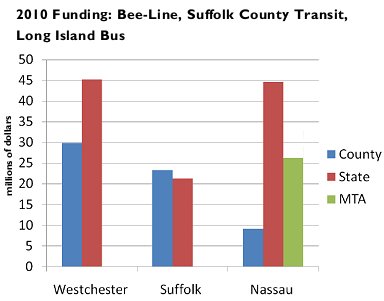It’s Friday night; you know the drill. Subway Weekender as the map.

From 12:01 a.m. Saturday, March 5 to 5 a.m. Monday, March 7, Manhattan-bound 2 trains skip Burke Avenue, Allerton Avenue, Pelham Parkway and Bronx Park East due to track work at Bronx Park East.

From 12:01 a.m. Saturday, March 5 to 5 a.m. Monday, March 7, 4 trains skip Fulton Street in both directions due to work on the Fulton Street Transit Center. Customers may use the 2, 3, A, C or J shuttle at this station as an alternative. (Note: The J shuttle operates between Chambers Street/Brooklyn Bridge and Fulton Street.)

From 6:30 a.m. to midnight, Saturday, March 5 and Sunday, March 6, 5 trains skip Fulton Street in both directions due to work on the Fulton Street Transit Center. Customers may use the 2, 3, A, C or J shuttle at this station as an alternative. (Note: The J shuttle operates between Chambers Street/Brooklyn Bridge and Fulton Street.)

From 7 a.m. to 5 p.m., Saturday, March 5 and Sunday, March 6, Queens-bound 7 trains skip 82nd, 90th, 103rd and 111th Streets due to cable work.


From 10:30 p.m. Friday, March 4 to 5 a.m. Monday, March 7, free shuttle buses replace A trains between Beach 90th Street and Far Rockaway due to station rehabilitation. A trains replace the Rockaway Park S shuttle between Broad Channel and Rockaway Park. (At all times until early summer, Manhattan-bound A platforms at Beach 36th Street and Beach 60th Street are closed due to station rehabilitation.)

From 4 a.m. Saturday, March 5 to 10 p.m. Sunday, March 6, Brooklyn-bound D trains run on the N line from 36th Street to Coney Island-Stillwell Avenue due to track panel installation between 50th Street and 55th Street. There are no Brooklyn-bound D trains stopping at 9th Avenue, Ft. Hamilton Parkway, 50th, 55th, 71st, 79th Streets, 18th and 20th Avenues, Bay Parkway, 25th Avenue and Bay 50th Street stations.

From 12:01 a.m. Saturday, March 5 to 5 a.m. Monday, March 7, D trains run local between 34th Street and West 4th Street in both directions due to fan plant rehabilitation.

From 12:01 a.m. Saturday, March 5 to 5 a.m. Monday, March 7, E trains run on the F line between Roosevelt Avenue and 34th Street-Herald Square due to work on the 5th Avenue Interlocking Signal System. The platforms at 5th Avenue-53rd Street, Lexington Avenue-53rd Street, 23rd Street-Ely Avenue and World Trade Center are closed. Customers may take the R, G, A or shuttle bus instead. Free shuttle buses connect Court Square (G)/23rd Street-Ely Avenue (E), Queens Plaza (R) and the 21st Street-Queensbridge (F) stations. Note: During the overnight hours, E trains stop at 36th Street, Steinway Street, 46th Street, Northern Blvd and 65th Street.

From 12:01 a.m. Saturday, March 5 to 5 a.m. Monday, March 7, Queens-bound F trains run on the A line from Jay Street-MetroTech to West 4th Street due to work at the Broadway/Lafayette-to-Bleecker Street transfer connection. There are no Queens-bound F trains at York Street, East Broadway, Delancey Street, 2nd Avenue or Broadway-Lafayette Street.

From 12:01 a.m. Saturday, March 5 to 5 a.m. Monday, March 7, L trains run in two sections due to rail work:
- Between Rockaway Parkway and Bedford Avenue and
- Between Bedford Avenue and Union Square (Trains run every 16 minutes and skip 3rd Avenue.)
The M14 bus replaces L train service between 3rd Avenue and 8th Avenue.

During the overnight hours from 12:01 a.m. to 6:30 a.m. on Saturday and Sunday, and to 5 a.m. on Monday, Brooklyn-bound N trains run over the Manhattan Bridge between Canal Street and DeKalb Avenue due to the installation of platform tiles at Cortlandt Street. There are no Brooklyn-bound N trains at City Hall, Rector Street, Whitehall Street, Court Street and Jay Street-MetroTech. Customers may use the 4 at nearby stations instead.

From 4 a.m. Saturday, March 5 to 10 p.m. Sunday, March 6, Manhattan-bound N trains skip 30th Av, Broadway, 36th Av and 39th Av due to track panel installation from Astoria Blvd to 36th Avenue.

From 12:01 a.m. Saturday, March 5 to 5 a.m. Monday, March 7, Manhattan-bound N trains run on the D line from Coney Island-Stillwell Avenue to 36th Street due to track panel installation from north of Kings Highway to north of Bay Parkway. There are no Manhattan-bound N trains at 86th Street, Avenue U, Kings Highway, Bay Parkway, 20th Avenue, 18th Avenue, Ft. Hamilton Parkway or 8th Avenue stations.

From 11:30 p.m. Friday, March 4 to 5 a.m. Monday, March 7, there are no Q trains between 57th Street-7th Avenue and Prospect Park in either direction due to BMT track tunnel inspection and structural repair and track and switch work north of Atlantic Avenue

From 6:30 a.m. to midnight, Saturday, March 5 and Sunday, March 6, Brooklyn-bound R trains run over the Manhattan Bridge between Canal Street and DeKalb Avenue due to the installation of platform tiles at Cortlandt Street. There are no Brooklyn-bound R trains at City Hall, Rector Street, Whitehall Street, Court Street, and Jay Street-MetroTech stations. Customers may use the 4 at nearby stations instead.

From 11 p.m. Friday, March 4 to 5 a.m. Monday, March 7, A trains replace the Shuttle between Broad Channel and Rockaway Park. (See A above.)





